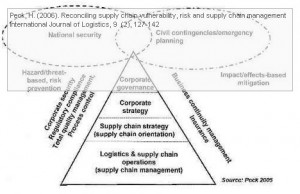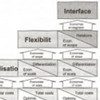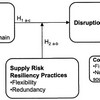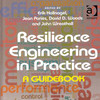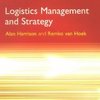 ISCRIM – 4 years ago it was a very big part of this blog. Unfortunately, after leaving the academic world of supply chain risk for a practitioner job in transport vulnerability, I lost touch with perhaps the main contributing source for not few of blog posts. However, attending a university course in road safety management recently rekindled my academic vibes, and even revived my interest in my husdal.com blog which had been withering along for the last three years or so. And now I have returned back to the fold, so to speak.
ISCRIM – 4 years ago it was a very big part of this blog. Unfortunately, after leaving the academic world of supply chain risk for a practitioner job in transport vulnerability, I lost touch with perhaps the main contributing source for not few of blog posts. However, attending a university course in road safety management recently rekindled my academic vibes, and even revived my interest in my husdal.com blog which had been withering along for the last three years or so. And now I have returned back to the fold, so to speak.
ISCRIM
My involvment in ISCRIM started in 2010 and the International Supply Chain Risk Management Network (ISCRIM) is a network of researchers and practitioners engaged in analyzing, developing and disseminating evidence and good practices associated with managing supply chains and their associated risks. Founded in 2001 by a handful of active researchers in this at that time still fledging field of research, it has now grown into a network of 35 researchers and practitioners in Europe and the US, and I am glad to once again being a direct part of it.
Dissemination
ISCRIM holds an annual research seminar and issues a newsletter to be found on their website once or twice every year highlighting the latest research in supply chain risk:
- Journal articles, research papers, conference presentations, PhD theses, books and book chapters
- Coming conferences and seminars
- Weblinks
The newsletter is a bit of who’s who, who does what, where should you go, and where can you find more on the subject of supply chain risk. If you’re new to supply chain risk, the newsletter is the best place to start and if you’re deeply involved with supply chain risk, work-wise, research-wise or otherwise, the newsletter is the best place to stay on top of what’s going on.
Catching up
Now that I have linked up with ISCRIM again, I realise that I have missed out on a great deal of very interesting and promising research. So there’s a whole lot of catching up to do, going through every newsletter since 2012 to see which paper I would like to present on this blog. There’s so much that I don’t even know where to start and I’m glad to see new names and never heard of research topics in journal articles, which will fill this blog with new content in due time.
Looking back…looking forward
I attended the ISCRIM seminar in 2010, meeting so many interesting researchers, hearing about so many interesting topics and basically really enjoying myself surrounded by supply chain risk on all sides. Since there weren’t any other with similar interests at my research institute back then, That was a whole new experience to me, and I guess that’s one of the reasons for quitting that job, because, in the end, I was rather alone in my special field. 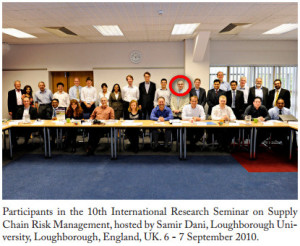
In my current job as a Resilience Adviser I have a national network of 5-10 people I can share and discuss my views on transport vulnerability with, and it dawned on me how important networks are, and that I should link up with ISCRIM once again. After all, I haven’t completely left supply chain risk territory; rather I’m like standing at the top of the pyramid in Helen Peck’s 2005 article on Reconciling supply chain vulnerability, risk and supply chain management, where she managed to draw a line from the ambiguous concept of risk in one company, through the supply chain, through extended networks and all the way up to society as a whole.
In my review of that article I concluded that
Supply chains link industries and economies more than we may be aware of, and the research agenda for supply chain risk and vulnerability needs to recognize that there are many and varied interests and communities involved. Consequently, and that is my view, too, research in supply chain risk and vulnerability is inclusive, rather than exclusive, of other fields.
In my case, given my current job, it’s probably more vice versa, I should not include other fields in supply chain risk, but rather include supply chain risk and vulnerability in the other field, i.e. what I do, namely resilience. I intend to do so, and being part of ISCRIM goes a long way in achieving that. After all, meeting and becoming part of ISCRIM has done a lot to keep my academic spirit going. Besides, as I understand it, membership is by merit, or invitation and recommendation only, so it is a bestowed privilege that I should not waste.
Related links
- iscrim.lfo.tu-dortmund.de: ISCRIM – connecting supply chain professionals
Related posts
- husdal.com: ISCRIM 2010
- husdal.com: Reconciling supply chain vulnerability, risk and supply chain management

